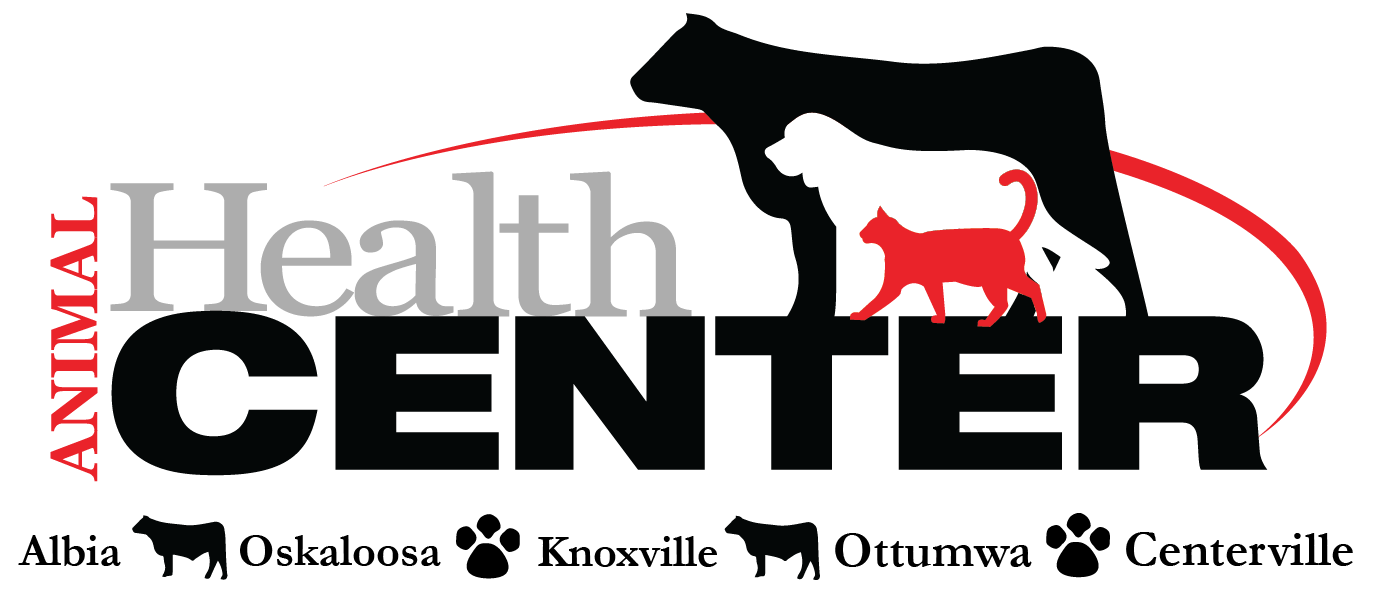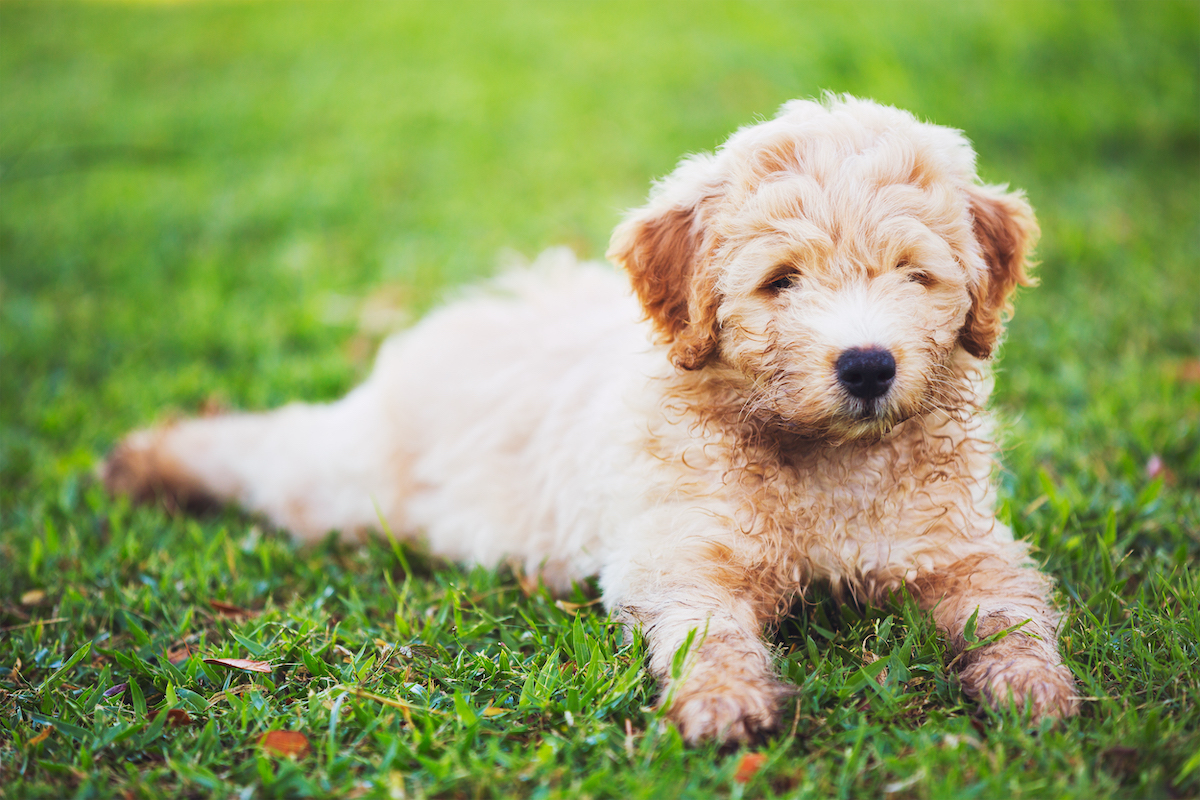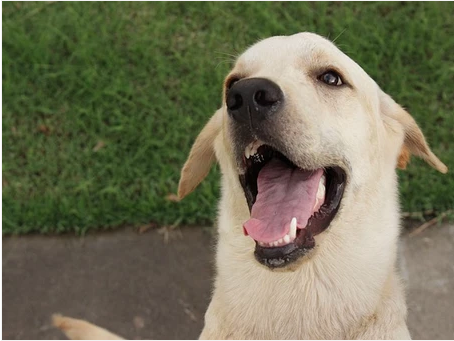There’s nothing your dog loves more than spending time outside, enjoying the exercise and smells your yard on a warm spring day. Yet, as the flowers start to bloom and your grass starts to thaw, you may begin to notice that it’s not always easy to keep your lawn green after Lassie does her business. Urine damage from dogs is a leading cause of dead spots throughout the lawn. However, these dead spots also indicate an underlying nutritional issue in your dog. Learn more about how you can keep your lawn green and keep your dog healthy.
Why Does Dog Urine Kill Grass?
Before you can start trying to prevent urine damage to your lawn, it’s important to understand why dog pee burns the grass in the first place. One reason why dog urine tends to turn your lawn brown is that it is too alkaline. Since dogs are carnivores, their urine should be slightly acidic, with a pH between 6 and 6.5. Often, however, your pup’s diet can raise the pH of urine above 7, which makes it much more likely to damage grass. Another major factor is the amount of nitrogen found in Lassie’s urine. Though nitrogen is an essential element of soil, too much of it is bad for your grass. When your dog pees, the concentrated nitrogen is all deposited in one spot, and the lawn suffers as a result.
Factors That Can Make a Lawn Burn Worse Not all dog owners have a problem with their pup’s urine ruining their lawn. In fact, there are several other factors beyond simply owning a dog that can make your grass more likely to be susceptible. You will usually find that larger dogs tend to have more of an impact on your grass than small breeds–after all, they produce more urine. Female dogs are often the worst offenders because they squat in one place to release all of their urine while males often mark everything they pass and rarely empty their whole bladder in one place.
Before you start implementing changes to correct lawn burn, you need to make sure your dog is indeed the culprit. Your lawn itself might also be as much of a problem as your dog’s urine. Several lawn diseases can look like lawn burn, causing small, characteristic brown patches. If you also use too much fertilizer, it can make your grass more prone to nitrogen overload, and a little dog pee could push it over the edge. Lawns that are already stressed from a drought are also much more likely to die when exposed to urine.
First, make sure that the brown spots are in areas where your dog urinates. Most dogs will have an area in the yard that they choose to use when they relieve themselves. Second, make sure that the grass in the brown spots is still firmly attached. Grab a handful and give it a steady pull. If the grass is firmly rooted, it points to lawn burn, if the whole bunch of grass pulls up, roots and all, then you may be dealing with a different lawn issue. And third, keep an eye out if any other dogs are coming into your yard and causing the problem.
Solutions for a Pesky Problem
Luckily, you don’t just have to accept defeat if your dog is ruining your lawn. There are several steps you can take to address the problem and keep your grass green and dog healthy:
- Saturate the urinated spots with water to wash away urine as quickly as possible. After the pet urinates, douse the affected area with water to dilute the urine. A watering can or hose works well.
- Feed your dog a high-quality dog food that does not exceed your pet’s protein requirement. Opt for vet-recommended brands like Royal Canin and Science Diet to be sure they are getting the correct amount of protein. They also consist of more digestible protein sources that are fully utilized by dogs to create less nitrogenous waste in the urine.
- Encouraging your dog to drink more water will help dilute the urine and decrease the risk of lawn burn. Adding small amounts of low sodium broth in your dog’s drinking water may help increase your dog’s water intake.
- Replant your yard with more urine-resistant grasses. The most resistant grasses tend to be perennial rye grasses and fescues. The most sensitive tend to be Kentucky bluegrass and Bermuda. You can also opt for a patch of clover or some other hearty greenery, and train your pup to do her business only in one dedicated area of the yard.
- Reduce the stress on your lawn by not over- or under-fertilizing and by watering frequently.
- If neighbors’ dogs are causing the problem, using a fence or motion-activated sprinkler may be helpful in keeping these dogs off your lawn.
We stock Science Diet and Royal Canin food and treats at all of our Animal Health Center locations. Our veterinarians can recommend the best food for your dog based on his or her needs. Call us or stop by to learn more!



